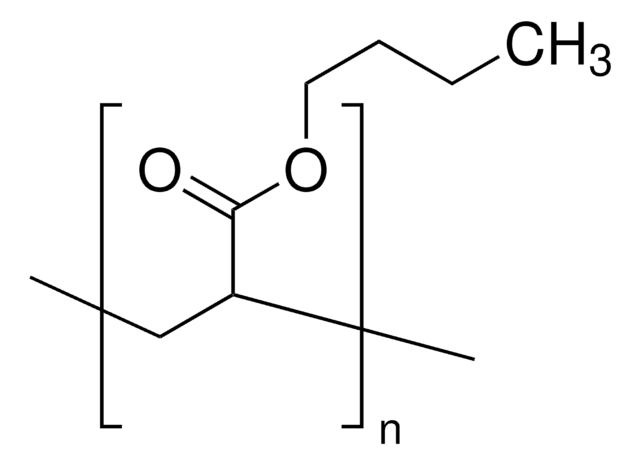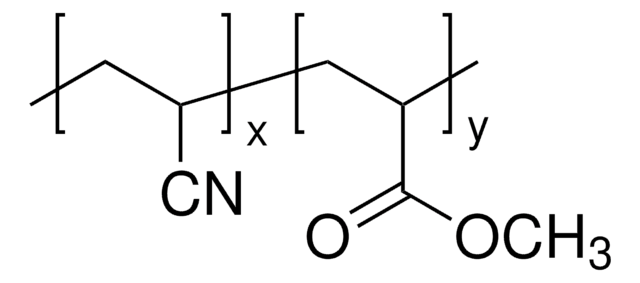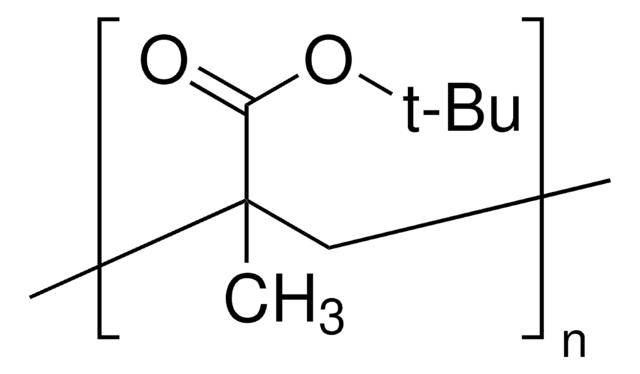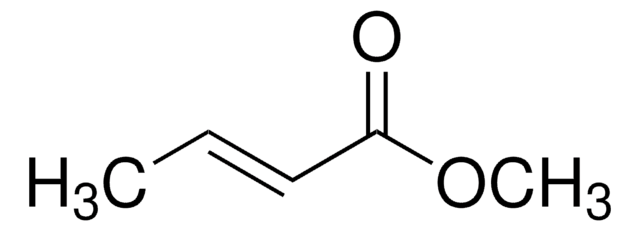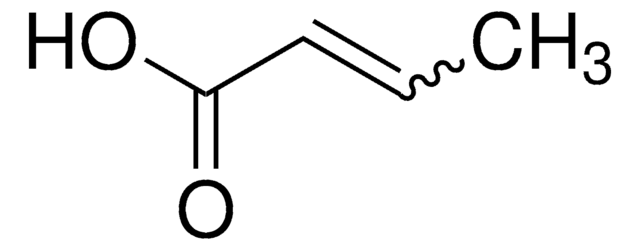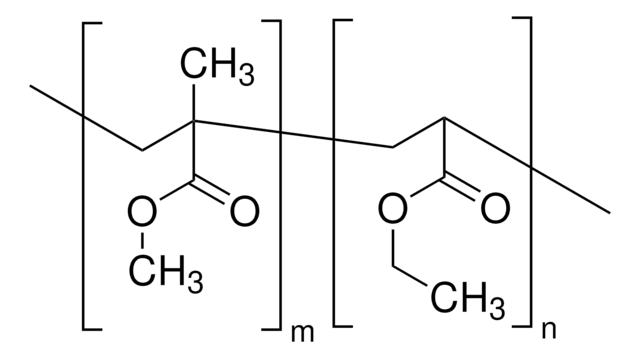추천 제품
일반 설명
Poly(butyl methacrylate) is a highly biocompatible polymer widely usedin drug delivery coatings.
애플리케이션
Poly(butyl methacrylate) has been used as a matrix to fabricate NO-releasing polymer films by solvent casting approach.
It can be used to prepare thermoresponsive microfibers with excellent mechanical properties. PBMA-containing microfibers can be used as temperature-modulated cell separation materials.
It can be used to prepare thermoresponsive microfibers with excellent mechanical properties. PBMA-containing microfibers can be used as temperature-modulated cell separation materials.
신호어
Warning
유해 및 위험 성명서
Hazard Classifications
Skin Sens. 1
Storage Class Code
11 - Combustible Solids
WGK
WGK 3
Flash Point (°F)
Not applicable
Flash Point (°C)
Not applicable
개인 보호 장비
Eyeshields, Gloves, type N95 (US)
이미 열람한 고객
Temperature dependent photoluminescence down to 4.2 K in EuTFC.
Haugen and Johansen TH
Journal of Luminescence, 128(9), 1479-1483 (2008)
Kadhiravan Shanmuganathan et al.
ACS applied materials & interfaces, 2(1), 165-174 (2010-03-23)
A new series of biomimetic stimuli-responsive nanocomposites, which change their mechanical properties upon exposure to physiological conditions, was prepared and investigated. The materials were produced by introducing percolating networks of cellulose nanofibers or "whiskers" derived from tunicates into poly(vinyl acetate)
Zhen Jiao et al.
Pharmaceutical development and technology, 17(2), 164-169 (2010-10-28)
Amphiphilic block copolymer micelle is one of the most important drug delivery systems to improve the water-solubility of lipophilic drugs. Blank micelles were prepared by solvent evaporation method in order to choose the suitable solvents for PBMA-b-PMPC (poly(n-butyl methacrylate)-b-poly(2-methacryloyloxyethyl phosphorylcholine))
Joanna Pietrasik et al.
Macromolecular rapid communications, 32(3), 295-301 (2011-03-25)
Hybrid nanoparticles with a silica core and grafted poly(methyl methacrylate) (PMMA) or poly(n-butyl methacrylate) (PBMA) chains were prepared via activators generated by electron transfer for atom transfer radical polymerization (AGET ATRP) at room temperature under high pressure. Due to enhanced
Wei Li et al.
International journal of nanomedicine, 7, 4661-4677 (2012-09-15)
The main obstacles for cationic polyplexes in gene delivery are in vivo instability and low solid-tumor accumulation. Safe vectors with high transfection efficiency and in vivo tumor accumulation are therefore highly desirable. In this study, the amphiphilic block copolymer poly(n-butyl
문서
Self-assembled monolayers (SAMs) have attracted enormous interest for a wide variety of applications in micro- and nano-technology. In this article, we compare the benefits of three different classes of SAM systems (alkylthiolates on gold.
자사의 과학자팀은 생명 과학, 재료 과학, 화학 합성, 크로마토그래피, 분석 및 기타 많은 영역을 포함한 모든 과학 분야에 경험이 있습니다..
고객지원팀으로 연락바랍니다.

